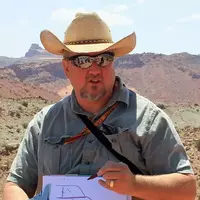Toward an undergraduate certificate program in natural hazards planning and mitigation
Authors
 Steven Semken, Arizona State University at the Tempe Campus
Steven Semken, Arizona State University at the Tempe Campus
 Heather Fischer, Oregon State University
Heather Fischer, Oregon State University
 Elizabeth Wentz, Arizona State University at the Tempe Campus
Elizabeth Wentz, Arizona State University at the Tempe Campus
 Patricia Gober, Arizona State University at the Tempe Campus
Patricia Gober, Arizona State University at the Tempe Campus
Natural hazards pose risks to people, institutions, and infrastructure. These risks are rendered more extreme, more complex, and more challenging to manage by global climate change. Recent extreme events including massive wildfires and severe storms in the US (and on other continents) reveal a need for a more robust system of preparation for and mitigation of natural hazards: implemented at the state and national level and reproducible elsewhere. This is a challenge for Earth and environmental scientists, engineers, and social scientists alike, as hazards originate and occur in the interfaces between natural and social systems. Research results indicate that better-educated societies with savvy decision-makers are best equipped to prepare for, mitigate, and recover from natural disasters. We seek to fully characterize the knowledge, skills, and dispositions required of graduates who will enter the natural-hazards workforce, and foster these in students by means of a certificate program accessible and professionally useful to hazards-minded students majoring in geoscience and other natural sciences, social sciences, engineering, planning, sustainability, and many other fields.
In 2019 and 2020 we conducted a collaborative design process involving workshops with faculty from community colleges, tribal colleges, and several universities who shared disciplinary and pedagogical expertise. We met our goal of collectively designing learning outcomes for an innovative undergraduate certificate in natural-hazards preparedness and mitigation, which is now under development. These learning outcomes focus on teamwork, communication, and natural hazard preparedness and mitigation. This certificate combines courses that can be offered at two-year and four-year colleges. Through this collaborative process and full implementation of the certificate program in the coming years, we offer a change to the fundamental way in which certificates are designed to fill the workforce gaps identified by the employment sector.
